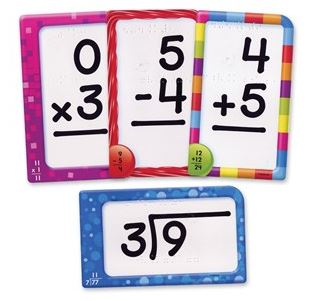A: While it might seem “old school”, learning math facts to fluency and mastery (i.e., quickly) level is still a very important skill. Math facts are addition, subtraction, multiplication, or even division problems that students should be able to recall within a few seconds.
Why is this important?
Learning math facts develops their number sense. This means that they will better understand the relationship between numbers. For example, it is important for your child to see that 8-5=3 because 3+5=8. It also develops an understanding of how far numbers are away from the nearest tens, which will aid in such skills as estimating and rounding. Basic math facts are also used in everyday activities including adding and subtracting larger numbers, telling time, counting money, and measurement. How about standing in the grocery aisle and deciding which size of Cheerios is the better value? How about handing the cashier a $20 bill and checking to make sure you received the correct change? Math facts come into play!
Math fact fluency also helps students solve more complex math problems more quickly. If they have mastered their math facts, these concepts will be significantly easier, and they will be better equipped to solve them more quickly. If your student is spending a lot of time doing the basic facts, he or she is more likely to be confused with the process and get lost in the calculations. Also, he or she will focus all attention on the basic calculation instead of the higher-level concept that is involved in solving the problem.
Math facts are also the building blocks for higher-level math concepts. In later elementary, students have longer and more complicated computations to complete to check their understanding of various concepts. At this stage, students who do not have their math facts committed to memory, will spend a disproportionate amount of time figuring out the smaller calculations and risk not completing the test. This not only affects their performance in math class but will also affect other subjects, such as science and geography.
Think of it this way, learning math facts is similar to learning languages in some ways. Just like you have to learn to blend letter sounds into words and words into sentences (fluently) to read, math facts are the foundation blocks for learning the next level of mathematics. There is rote learning involved in both reading and math mastery. Math anxiety starts when children fall behind and can’t keep up. To avoid these anxieties, students’ early elementary years should focus on learning the foundation math skills needed for later years – math facts are among those important math skills.

